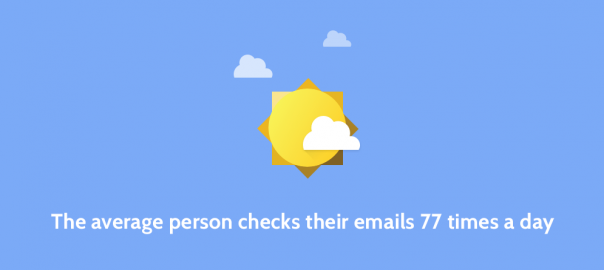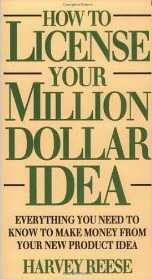
Everyone on the 9-5 grind fantasizes about working fewer hours. It’s one reason why Tim Ferriss’ The 4-hour Workweek shot to the top of the bestseller list when it came out in 2007. It offered people a chance to live the dream.
So why isn’t everyone doing it today?
The 4-hour Workweek is irresistible. But despite the catchy title, Ferriss’ point isn’t even really about working four hours versus 40. It’s about adopting a radically different approach to work that’s alien to the majority of people.

Here’s the thing: most people don’t use their 40-hour workweek to accomplish as much as they possibly could. They go to a couple meetings, check their email over and over, procrastinate—and somewhere in between, they find time to get a little work done. They figure, “Hey, I put in my eight hours today,” but don’t think about whether they’re using that eight hours to meet goals efficiently.
Ferriss’ system demands you prioritize output instead of hours. It requires you to eliminate wasted time, squeeze every possible ounce of productivity from each hour you put in, and constantly ask yourself, “is what I’m doing right now helping me reach my goals?” While most people go through the workweek on cruise control, Ferriss’ strategies turn you into a highly-focused laser beam of productivity.
Most people will never work just four hours a week. But we’ve come up with the strategies and tools for anyone to tap into Ferriss’ DEAL system—Define, Eliminate, Automate, Liberate— to become more productive and drastically cut down their workweek.
Define Goals, Not Tasks
You might think that high-powered entrepreneurs get up in the morning and hit the ground running, and dreaming up the next Hyperloop. After all, there’s no time to rest when you’re growing a company from scratch, right?
But we actually found that SaaS startup CEOs like Jimmy Jacobson of Wediges and Chris Savage of Wistia start each day by methodically outlining and prioritizing the goals they want to get done.
Too many people get tripped up by immediately diving into tasks without thinking about their goals. They mindlessly move through their workload without any sense of how they’re progressing to their desired results. Instead, you need to lay out the goals you need to attain and then figure out the tasks that will lead you there.

Here are three simple but powerful strategies to define the goals for your soon-to-be-shortened workweek.
- Determine which results actually matter. When it comes to New Year’s resolutions, entrepreneur and sales expert Steli Efti writes that you need to choose the one yearly goal that will have the best impact on your results. Take the same approach with your workweek. Write down every goal you’d achieve in a perfect world. Separate those goals into “must-haves” and “nice-to-haves.” Then, cross out all the nice-to-haves. Every war has casualties, and in your war to work more effectively, those casualties are going to be the goals that add the least value.
- Not sure if a goal is important? Visualize “the nightmare.” You might have some trouble discerning which goals are mission-critical and which are fluff. Ferriss’ solution: define the nightmare. For each goal, imagine the worst thing that will happen if you don’t complete it. If the consequences are low, then guess what? It’s a nice-to-have. Cross it out.
- Set deadlines for the must-haves. And not just any deadlines. Harsh ones. Consider Parkinson’s Law—the scientifically-proven idea that work expands to fill time. For example, researchers tested whether undergrad students finished projects more quickly with or without a deadline. Without a deadline, only 37.1% completed tasks by the time they predicted they would. But with a strict deadline, 80.6% finished on time. The takeaway: deadlines make you get shit done, but predictions don’t. So ask yourself how long you think each goal should take, and give yourself half that time.
It’s basic math. By reducing your workload to the goals that actually matter and giving yourself tough deadlines, you’re guaranteed to do more with fewer hours.
Ruthlessly Eliminate Distractions
Most people hear “4-hour Workweek” and think, “How is that possible? I can barely get all my work done in 40 hours.” But between unnecessary meetings, banal emails, and idle water cooler talk, they aren’t actually using those hours effectively.

They don’t realize it, but most people fall prey to the 80/20 principle, meaning 80% of their results come from just 20% of the time they put in. So in a typical 40-hour week, they’re highly productive for about eight hours and spend the other 32 on on distractions.
It’s tough because those distractions can feel like important work. But these tricks can help you separate the wheat from the chaff and eliminate menial time-wasters.
- Must-haves only. Every time you start a new task, ask yourself, “Does this contribute to one of my must-have goals?” If the answer is no, then don’t do it. The whole point of setting those must-have goals is to focus exclusively on the results that matter. Don’t negate that by turning around and working on nice-to-haves.
- No multitasking. Today, everyone is obsessed with multitasking, but research shows it’s a terrible strategy. The human brain simply isn’t designed for it. For example, scientists recently found that a secondary task as minor as having a conversation decreased drivers’ attention to the road by 37%—a potentially deadly deficit. Since you’re only focusing on the must-have goals each week, you need to do them justice and knock them out one at a time.
- Don’t be a slave to communication. Another workplace myth: email makes our lives easier. But constant contact with your colleagues usually means you’re bombarded with distractions disguised as critical messages. As a result, the average person checks email 77 times a day.

- Informatics professor Gloria Mark bluntly writes, “The more emails people do, the lower their assessed productivity.” Buck the trend and only check email twice a day. Does your team use Slack? Same idea—turn off notifications for messages that don’t mention you by name.
Beating the 80/20 rule looks a lot like natural selection. Eliminate the 80% of tasks that don’t get you anywhere, and multiply your efforts on the 20% that do.

(Image source: Asian Efficiency)
Automate your Workflow—the Right Way
Workflow automation tools let you outsource tedious but necessary tasks to someone—or something—else. They’re widely available and can save a ton of time, but only if you use them correctly.
For an overview of two major players, check out our review of Zapier vs IFTTT.
Too many so-called productivity tools end up making people less efficient. The Wall Street Journal points the finger at apps that, for example, force users to tag every phone call, email, or to-do list item with a project category. That just creates extra tasks that cripple productivity.
As cognitive psychologist Paul Atchley points out, you lose 15 minutes of productivity every time you have to switch back and forth from your primary activity. That means if a tool interrupts your work, and you use it four times a day, that’s a whole hour down the drain.

Below are three ways to integrate tools into your normal workflow and take stuff off your plate rather than add to it.
- AI assistants. Technology has revolutionized the virtual assistant game. Clara and X.ai, for example, are AI-powered assistants so human most people can’t even tell they’re computers. If you’re emailing with someone, you can easily CC them and ask them to, say, schedule time to meet. Fin, on the other hand, does all the same things, but is powered by a 24-hour rotating staff of real people.
- Create paths between your apps. Using a workflow automation tool like Zapier lets you connect your most-frequented business apps so they trigger specific actions of your choosing. For example, if you were a social media marketer, you could create a “zap” that notifies you in Slack whenever an Instagram photo with a specific tag is shared. Check out our list of 50 Zapier-compatible apps for more examples.
- Productivity. On an individual level, there are plenty of to-do-list apps to help you prioritize everything you need to get done. Our favorites are Todoist, Wunderlist, and Any.Do. On a group level, Process Street lets you turn all your business’ processes into checklists you can share throughout the organization. You can also use iDoneThis to keep track of what you accomplish at the end of each day.
The best part about automation is that new tools are coming out every day. Keep on top of all the latest trends and always look for new technologies to help you work smarter.
Liberate Yourself and Get Even Better
At the end of the day, The 4-hour Workweek strategy is about improving yourself and becoming actively engaged in your work. In many ways, shortening your workweek isn’t so much the goal of the process as it is a side-effect of becoming more productive—there’s no need to work all those hours if you’re getting 4x as much done as the next person over.
So if you successfully cut your workweek in half, congratulations! But don’t sell yourself short and stop improving now. Put your newfound free time to grow your productivity further. Consider these three ideas to advance further.
- Learn. You can better yourself by learning something new. Career-wise, nothing makes you a hotter commodity than picking up a new skill, whether it’s coding in R, growth hacking, Excel—whatever. Read new books, or learn how to garden.
- Network. I guarantee there are networking events for professionals in your industry every single day in your city. Now that you have the time, you can get out there and meet new people. You might unearth a big opportunity—a new connection who just so happens to need someone as productive as you.
- Innovate. You probably have some awesome ideas floating around in your head that you now have time to pursue. Consider someone like Elon Musk. After he sold PayPal in 2002, he got started on what would become Tesla and SpaceX. You might not be the next Musk, but you’ll never know unless you translate ideas into action.
The possibilities are endless. That’s the beauty of cutting your workweek in half. You can devote that extra time to anything you want.
It’s Not Just About Output
Reading The 4-hour Workweek changed my life. It inspired me to start my first e-commerce business and move to Thailand, where I lived comfortably off the profits for a year.
But reaping the benefits of Ferriss’ book doesn’t require you to transplant yourself to a foreign country.
When you prioritize output over time, you feel a sense of ownership because you’re actively working toward a specific set of goals—goals you identify as important—instead of passively finding ways to fill a pre-determined number of hours. Psychologists have identified that sense of ownership as one of the most powerful drivers not just of productivity, but also high levels of engagement and satisfaction in the workplace.
So Ferriss’ framework doesn’t just allow you ditch the inefficiency of the 40-hour workweek. Yes, it makes you more productive, but it also makes you more engaged. And when you’re more engaged, you’re even more productive. It creates a positive feedback loop where your increased output and engagement feed off each other to continuously grow.
Business & Finance Articles on Business 2 Community(53)
Report Post





